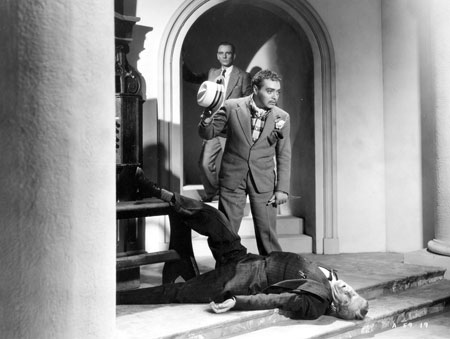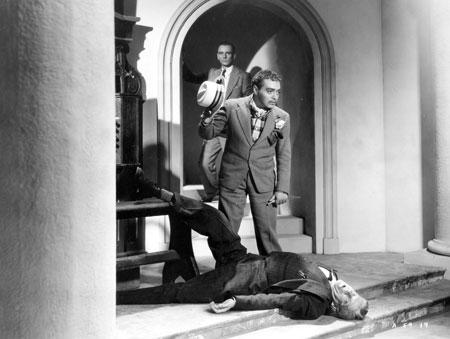Writing for London’s Spectator in 1936, the novelist Graham Greene used Alfred Hitchcock’s latest thriller, Sabotage, to levy this criticism at the director:
His films consist of a series of small “amusing” melodramatic situations: the murderer’s button dropped on the baccarat board; the strangled organist’s hands prolonging the notes in the empty church; the fugitives hiding in the bell-tower when the bell begins to swing. Very perfunctorily he builds up to these tricky situations (paying no attention on the way to inconsistencies, loose ends, psychological absurdities) and then drops them: they mean nothing: they lead to nothing.
Greene meant it as a slight, but I’m not so sure Hitchcock would have taken it as one. The more Hitchcock films you see (and you’ve got your pick for the rest of the month), the more you want to respond to Greene, “Yeah, and?”
Hitchcock made a career of crafting films concerned more with the chase itself than with the impetus for the chase or the consequences of getting caught, getting away, or saving the day. At the end of North by Northwest, as Cary Grant and Eva Marie Saint find themselves safe from pursuit—yet still dangling perilously from Mount Rushmore—Hitchcock simply cuts to the couple safe and sound in a train for a quick and tidy resolution. The director seems to say “there is no danger but the chase.” Come on: we all know no one’s falling to their death unless they’re pushed.
Sabotage is an adaptation of Joseph Conrad’s novel The Secret Agent—not to be confused with another Hitchcock film, Secret Agent, released a year earlier. On the other hand, if you do find it confusing, you can hedge your bets by seeing both on Saturday night in a double feature. Of the two, I prefer Secret Agent—er, the Hitchcock film, not the Conrad novel—almost entirely due to the marvelous supporting performance from Peter Lorre, who steals every scene he’s in. Set during World War I, Lorre aids fellow spies John Gielgud and Madeleine Carroll, who are posing as a husband and wife in Switzerland and are tasked with killing a man whose identity they do not know. When Hitchcock planned the making of the film, he told Francois Truffaut, “I asked myself, ‘What do they have in Switzerland? They have milk chocolate, the Alps, village dances, and lakes… [so] we used lakes for drownings, the Alps to have characters fall into crevasses, and a chocolate factory for the chase.’”

Secret Agent, 1936
Sounds like the recipe for a great thriller. So to Graham Greene I must ask again: “Yeah, and?”



